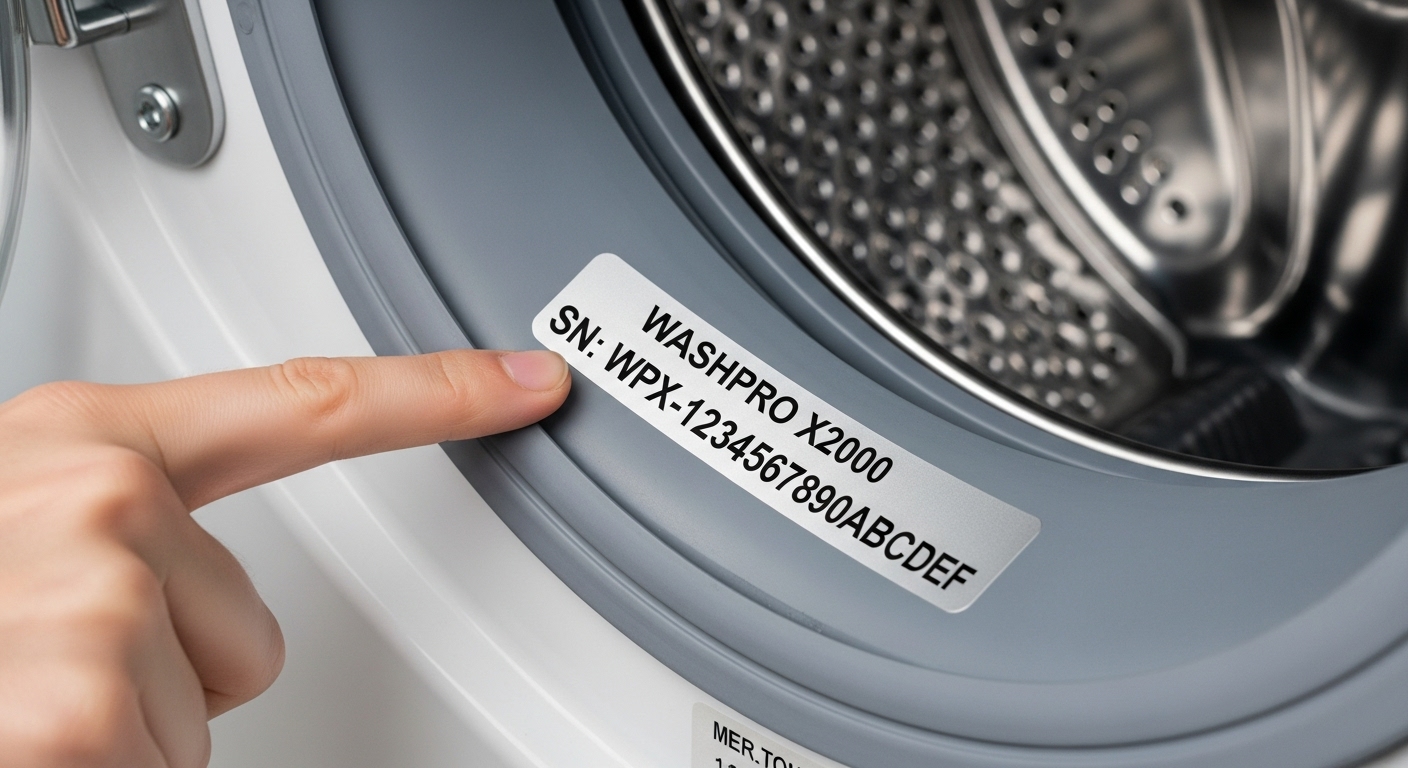Wondering when that trusty refrigerator was actually manufactured, or trying to figure out if your washing machine’s latest breakdown means it’s time for the scrap heap? Understanding your appliance’s real age isn’t just about satisfying curiosity – it’s the secret weapon for making smart repair versus replacement decisions that could save you hundreds or even thousands of dollars. Picture this: you’re standing in your Coquitlam kitchen at 7 AM, coffee mug in hand, staring at a dishwasher that’s decided to flood your floor instead of cleaning your dishes. Your repair technician quotes $400 to fix it, while a shiny new model at the appliance store costs $800. Do you repair or replace? The answer isn’t as obvious as it seems, and it all starts with one crucial piece of information most homeowners never think to look up: when was this appliance actually made? As someone who’s navigated the appliance repair maze more times than I’d care to admit (thanks, inherited 1990s kitchen suite!), I’ve learned that age verification is like having a crystal ball for your household equipment. That innocent-looking serial number sticker hiding behind your refrigerator or inside your washing machine door contains encoded manufacturing date information that transforms your repair decision from emotional guesswork into strategic planning. Whether you’re dealing with a temperamental range that’s started heating unevenly or a dryer that takes three cycles to dry a single load, knowing exactly when your appliance rolled off the production line gives you power in repair negotiations, helps you understand whether problems indicate normal wear or premature failure, and most importantly, reveals whether you’re throwing good money after bad or making a wise investment in continued reliability. The challenge is that every manufacturer uses different coding systems, turning what should be simple age verification into a puzzle requiring brand-specific knowledge. Add in Coquitlam’s unique environmental factors – the persistent moisture, hard water, and dramatic seasonal temperature swings that can reduce appliance lifespans by years compared to drier climates – and suddenly understanding your appliance’s age becomes even more critical for making decisions that align with regional realities.
Key Outtakes:
- Serial numbers, not model numbers, contain the key to unlocking your appliance’s manufacturing date through brand-specific coding systems
- The “50% rule” suggests replacing appliances when repair costs exceed half the replacement price, but this guideline requires adjustment based on appliance age and remaining useful life
- Coquitlam’s Fraser Valley climate reduces typical appliance lifespans by 10-20% due to humidity, hard water, and temperature extremes
- Appliances past two-thirds of their expected lifespan warrant serious replacement consideration even for repairs under 50% of replacement cost
- Professional maintenance and environmental controls can extend appliance life 3-5 years beyond regional averages, making proactive care highly cost-effective

Understanding Why Appliance Age Verification Matters More Than You Think

Here’s the thing about appliances that nobody tells you when you’re excitedly unboxing your new dishwasher: they’re not just household tools, they’re depreciating assets with predictable lifecycles that determine whether repairs make financial sense or represent money down the drain. Understanding your appliance’s true age transforms you from a reactive homeowner who panics when something breaks into a strategic planner who anticipates problems and makes informed decisions based on data rather than desperation. Most appliances follow surprisingly predictable failure patterns, with the majority of major breakdowns occurring around the eighth year of service life according to repair industry experience. This isn’t random – it reflects the reality that manufacturers design components to last specific durations, and when one major system fails, it often signals that other components are approaching their failure points too. Think of it like a car reaching 150,000 miles: sure, you can replace the transmission, but should you be surprised when the alternator dies six months later? The financial mathematics become clear when you consider that the average appliance repair costs $171 according to industry data, but replacement costs range from $300 for basic models to over $3,000 for premium units. However, these averages mask crucial variation based on age: repairing a three-year-old refrigerator typically involves straightforward component replacement under warranty coverage, while fixing a twelve-year-old model often requires sourcing discontinued parts at premium prices, with technicians charging extra for the time spent hunting down obsolete components.
Decoding Serial Numbers: Your Brand-Specific Guide to Manufacturing Dates

Every major appliance manufacturer uses a different system for encoding manufacturing date information within serial numbers, turning what should be straightforward age verification into a brand-specific puzzle that requires learning multiple decoding methods. The good news is that once you understand the patterns, most systems are surprisingly logical and can be decoded without special tools or internet research. General Electric pioneered one of the most user-friendly systems, using two letters at the beginning of the serial number to indicate manufacturing month and year. The first letter identifies the month – A for January, D for February, F for March, continuing through the alphabet with certain letters skipped to avoid confusion. The second letter indicates the year, following a twelve-year rotation that requires some detective work to determine the correct decade. For example, if your GE refrigerator’s serial number begins with “GA,” this indicates manufacturing in April (G) of a year represented by “A” – which could be 2001, 2013, or 2025 depending on the twelve-year cycle. You’ll need to use visual styling cues or the owner’s manual publication date to determine which decade applies. GE helpfully suggests cross-referencing with the manual’s print date, typically shown as “02-20” for February 2020 or “04/17” for April 2017. Whirlpool takes a different approach entirely, embedding the manufacturing year in the second character of the serial number for appliances manufactured after 1981. Their system uses letters where X represents 1990, A represents 1991, B represents 1992, continuing through the alphabet and repeating approximately every twenty-six years. This method works for appliances sold under Whirlpool, Maytag, KitchenAid, Jenn-Air, and Amana brands, though Maytag’s 2006 acquisition by Whirlpool created a transition period where some models use the older Maytag system.
Samsung and LG: Navigating Asian Manufacturer Systems
Samsung uses perhaps the most complex system, with date codes varying based on serial number length. For 15-digit serial numbers, the year appears in the 8th digit and month in the 9th digit, while 11-digit serial numbers encode year in the 4th digit and month in the 5th digit. Samsung year codes include R for 2001, T for 2002, W for 2003, with letters A through H representing 2006 through 2013. Month codes use numbers 1-9 for January through September, with A for October, B for November, and C for December. LG simplifies things somewhat by using the first numeric character to represent the last digit of the year (so “5” could represent 2015, 2005, or 1995), with the second and third numeric characters representing the month. The challenge lies in determining which decade applies, requiring visual assessment of styling and features to distinguish between a 2005 model and a 2015 model with the same year code digit. For Coquitlam residents dealing with less common brands or struggling with faded serial number labels, online tools like HomeSpy.io’s Appliance Age Finder provide automated decoding services that accept model and serial number input to return manufacturing date information. These resources prove particularly valuable for brands with obscure coding systems or when manual decoding charts aren’t readily available.
Regional Factors: How Coquitlam’s Climate Affects Your Appliance Lifespan Expectations

While national appliance lifespan statistics provide useful baseline expectations, Coquitlam residents need to understand how the region’s unique environmental conditions significantly impact actual appliance longevity. The Fraser Valley’s position between the Coast Mountains and Pacific Ocean creates rapid humidity changes, persistent moisture exposure, and dramatic seasonal temperature fluctuations that place stress on household appliances not typically experienced in more climatically stable regions.
